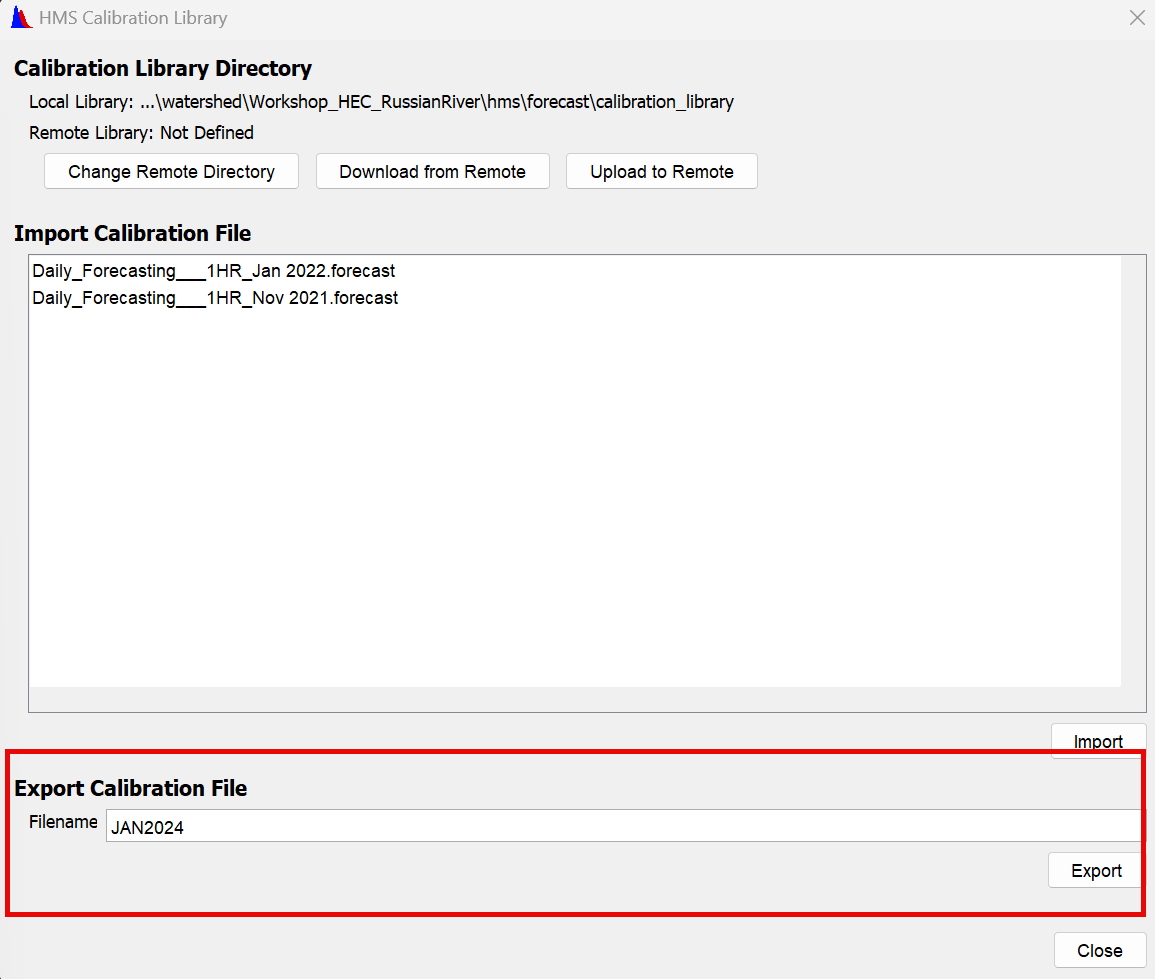Task 2: Import Existing Forecast Adjustment Factors for a Better Starting State
In this task, we are going to import HMS zonal adjustment factors from past calibrated forecasts as a starting point in the January-February 2024 forecast.
- Download a copy of the HMS Calibration Library script from: https://github.com/HydrologicEngineeringCenter/HEC-RTS-scripts/blob/main/HMS_Calibration_Library.py.
- Place the script into the C:\CalibrationExample\watershed\Workshop_HEC_RussianRiver\scripts directory as shown below.

- Using File Explorer, navigate to the C:\CalibrationExample\watershed\Workshop_HEC_RussianRiver\hms\forecast directory. You should see a folder named "calibration_library". This directory was created by the HMS Calibration Library script and it contains the *.forecast files from two previously computed forecasts. These HMS forecast files include zonal adjustment factors set by calibrating forecasts to two past events, one from January 2022 and the other from November 2021. Notice the date of the forecast is included in the file name.
- Go to the Scripts menu and select the Editor menu option to open the HEC-RTS Script Editor.
- Double click the HMS_Calibration_Library script to open it as shown below (make sure the forecast is opened before you run the script).
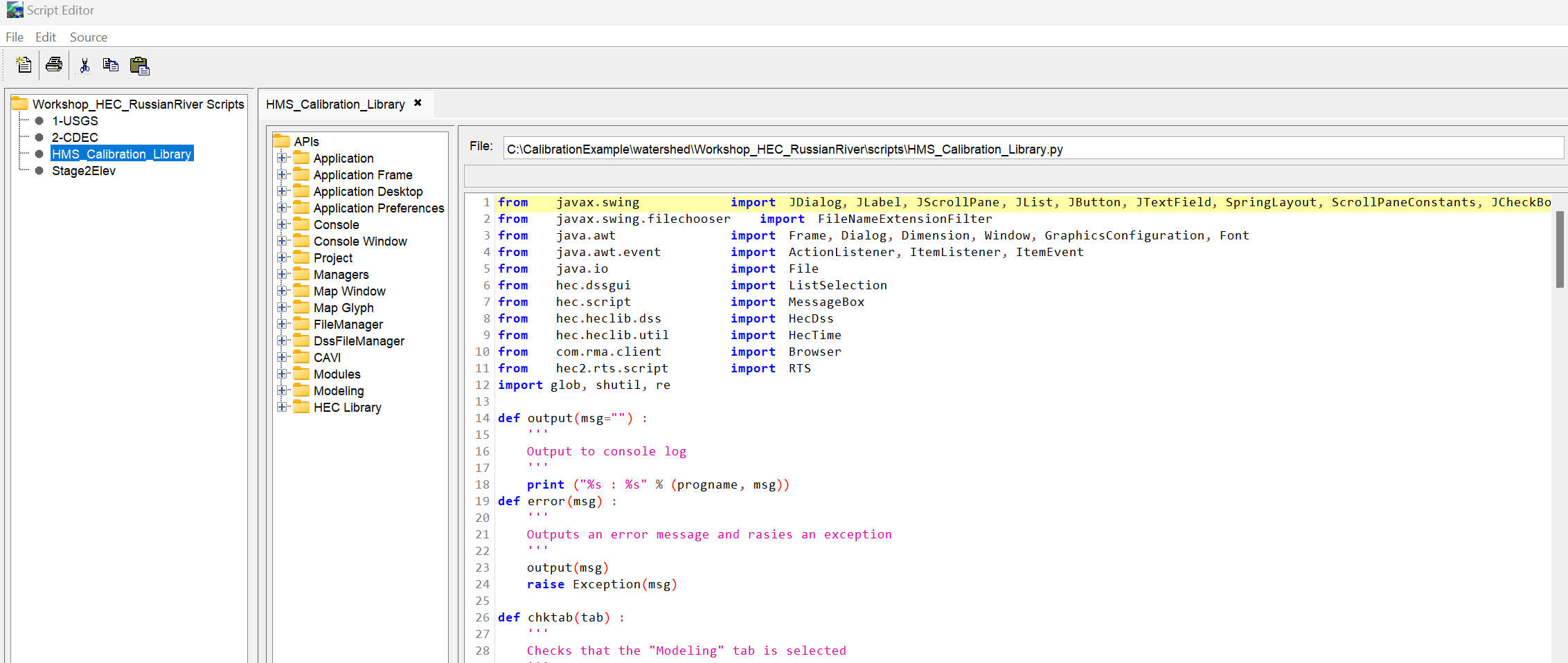
- Click the Save/Run button at the bottom of the Script Editor to run the script. The following Window should open. Notice there are two calibration files in the Import Calibration File table.
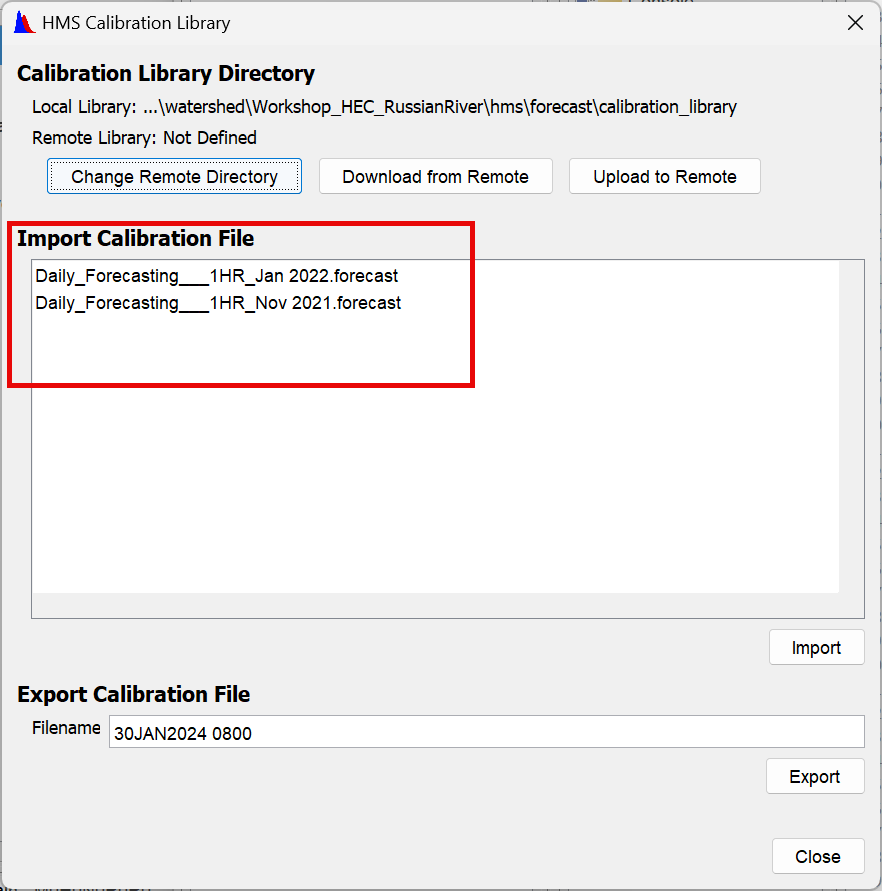
- Select the Daily_Forecasting__1HR_Nov 2021.forecast file and click the Import button. After you click Import, you will see the Copy Model Changes dialog as shown below. This dialog opens because HEC-RTS needs to close the forecast in order for the HMS November 2021 forecast file to replace the current forecast. Click the Close button to close the Copy Model Changes dialog.
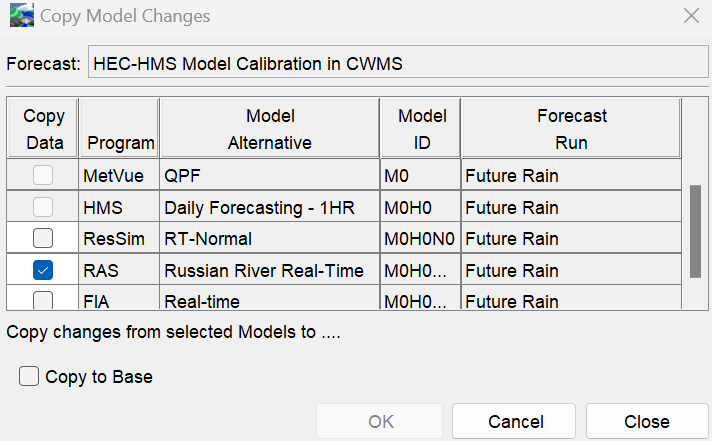
- Next, the Open Forecast dialog will pop open. Choose the HEC-HMS Model Calibration in CWMS forecast. You will see the following message telling you that an existing HMS forecast file was copied into the active forecast.

- Select the HEC-HMS node in the Forecasts window, then click the Combined Parameter Editor action button as shown below.
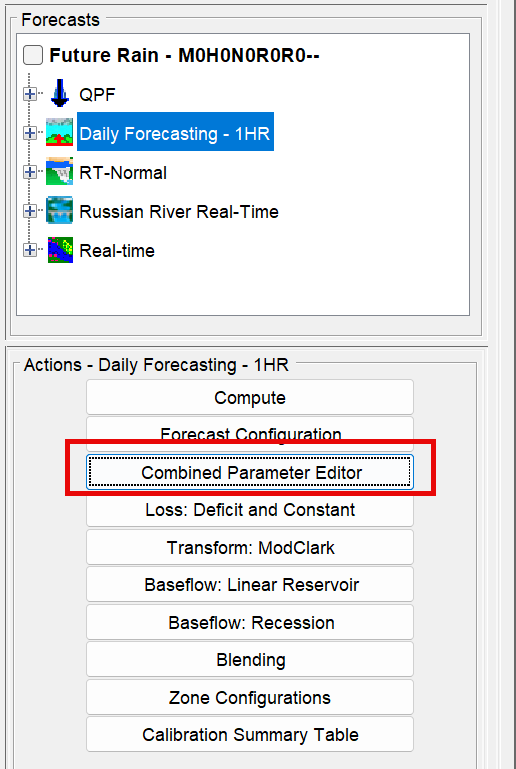
- As shown in the following figure, you should see initial deficit and constant rate parameter adjustments that reflect dry watershed conditions. More than likely, using the zonal adjustment factors from a November event will lead to poor performance when modeling a January flood event. Generally, California watersheds are not saturated in November, when you likely see HMS model parameters/initial conditions that reflect drier watershed conditions.
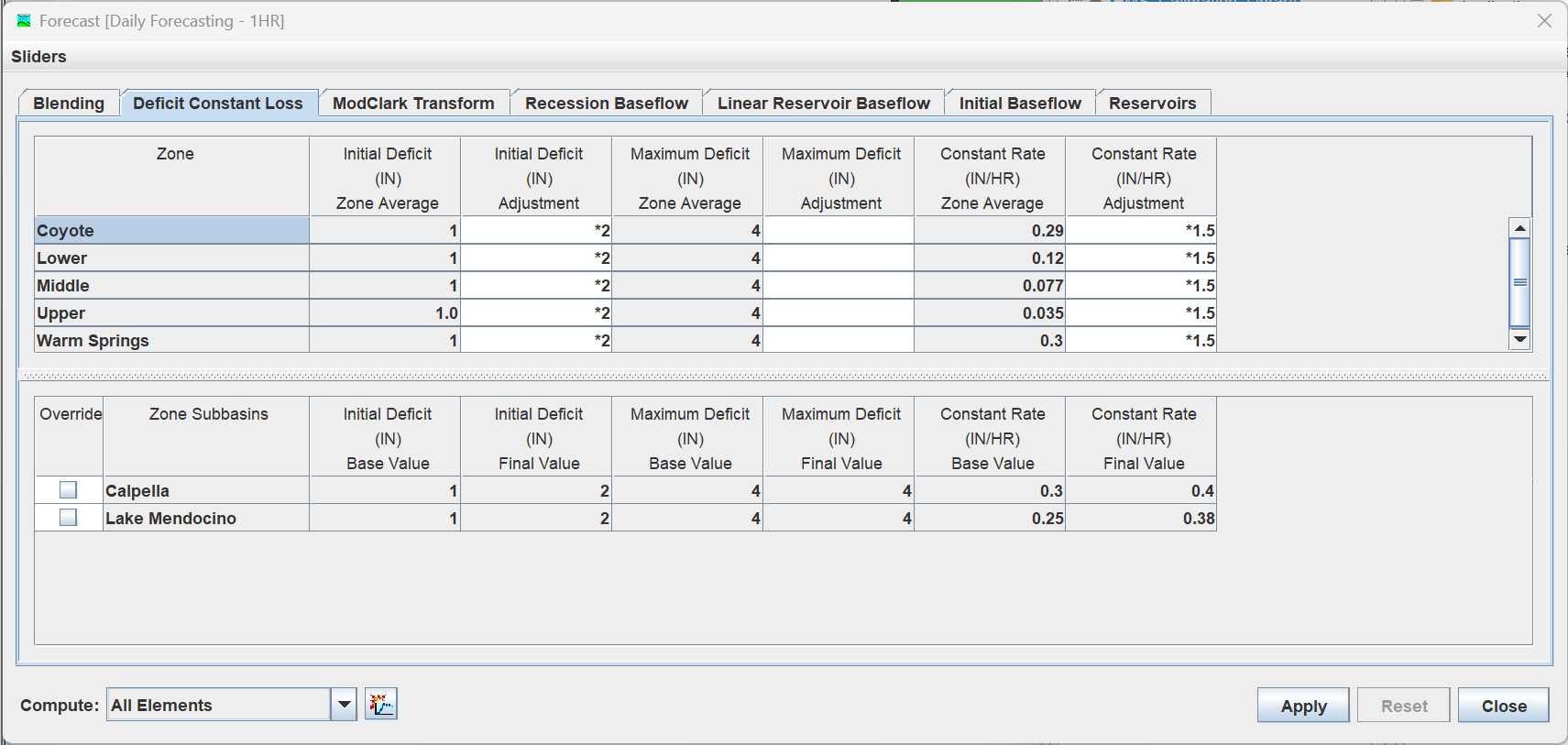
- Click the Compute action button from HEC-RTS to run the HMS forecast.
- Open HEC-HMS results at the Calpella Gage junction and Coyote reservoir elements. Notice how poor the model performs in the lookback period. Using the zonal adjustment factors from the November 2021 event as a starting point for the active forecast, occurring in January-February 2024, did not turn out to be a time saver. Results from using default starting conditions, shown in Task 1, are better than using zonal adjustment factors from the November 2021 event.

- Now, let us give the zonal adjustments from the January 2021 event a try in the current forecast. Follow the steps above using the HMS Calibration Library tool to import/replace HMS zonal adjustments with those in the Daily_Forecasting__1HR_Jan 2022.forecast file.
- Deficit and Constant loss model zonal adjustments from the January 2022 calibration are shown in the following figure. Notice the adjustments are much smaller than those from the November 2021 calibration, which indicates the January 2022 event occurred on a saturated watershed.
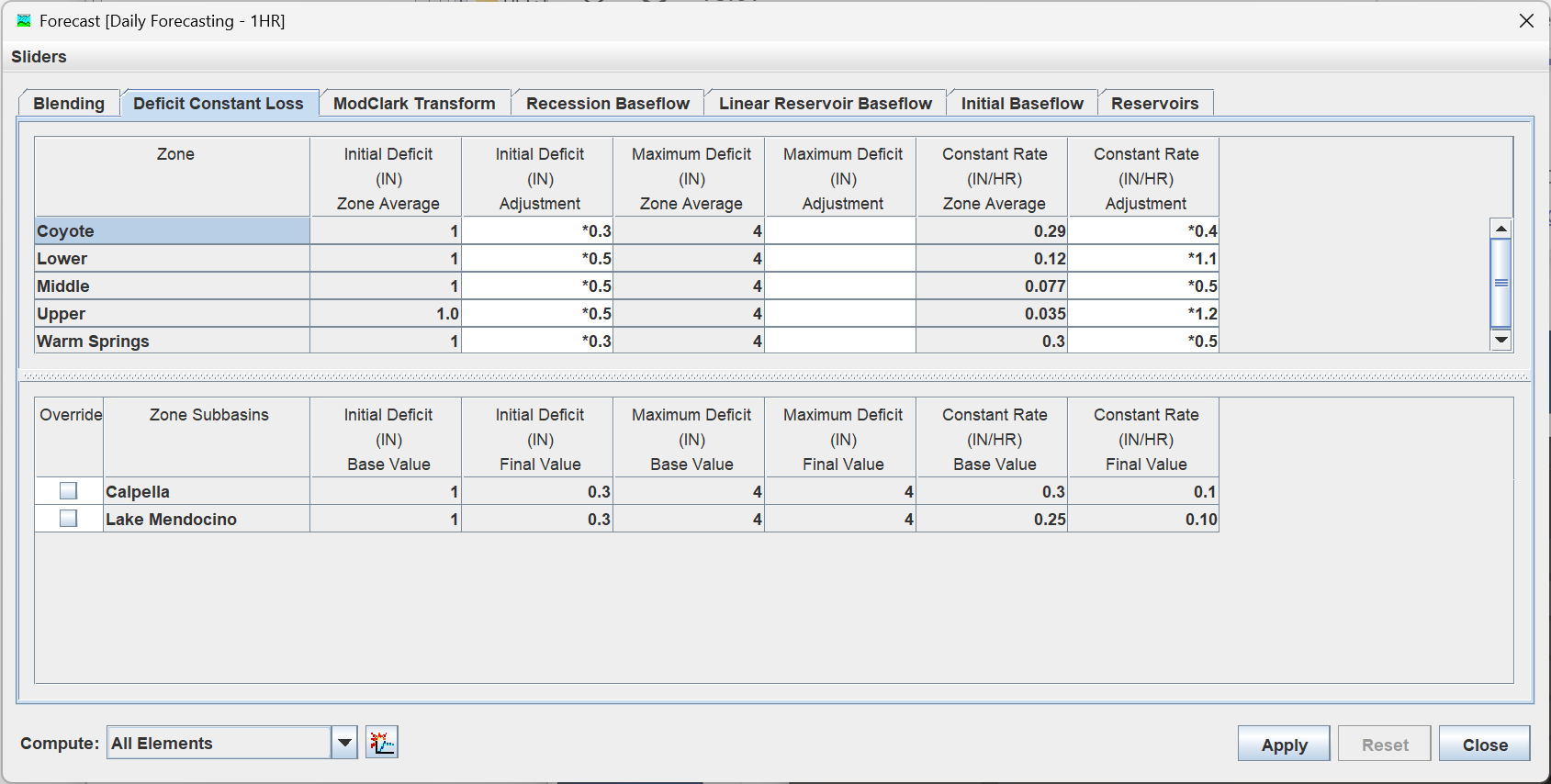
- Click the Compute action button from HEC-RTS to re-run the HMS forecast.
- Open HEC-HMS results at the Calpella Gage junction and Coyote reservoir elements (shown below). Notice how much better the model performs when using HMS zonal adjustments from the January 2022 for the active forecast that occurs in January-February 2024.

- As shown in this example, using HMS zonal adjustment factors from other forecast events can improve the starting point when calibrating a model to a real-time event. The key is to use parameter adjustments from similar events (events with similar watershed conditions prior to the forecast event). You should always perform additional adjustment of model parameters to improve the models performance. Once you have finished the event specific model calibration, then save the forecast file back to the calibration model library. As shown below, use a descriptive name for the exported file and click the Export button. The tool will automatically prepend the HMS forecast's name to the filename entered by the user.
